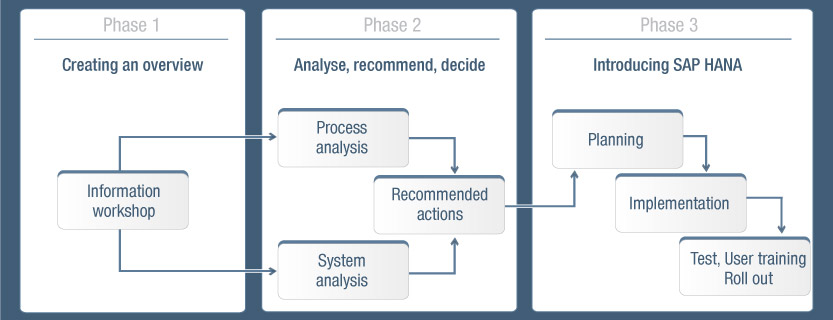SAP S/4HANA: Help for SAP Users
The possible paths for making the switch to S/4HANA will be just as varied as each SAP installation. Which migration scenario is best? What intermediate steps make sense? How much time and money will the conversion cost?
Many SAP users fear that converting to S/4HANA in a single step would be too complex and difficult to control. For these users, intermediate steps – such as initially only introducing the new HANA database – might be a good possible solution.
Other users find a partial conversion to “S/4HANA Finance” interesting because of SAP HANA’s attractive benefits in finance. A gradual conversion also means more straightforward projects and the opportunity to begin gathering early experience with the new system.
Developing a customised roadmap

Phase 1
Creating an overview
An information workshop helps outline what will be involved in a conversion process. Workshops cover things like the differences in the various SAP HANA technologies, typical business cases for specific departments, hardware and software requirements, possible migration scenarios, and the effects on the organisation and roles.Phase 2
Analyse, recommend, decide
Phase 2 involves analysis of a company’s system structure, as well as internal processes and their modifications, resulting in concrete recommended actions for the implementation process.Phase 3
Introducing SAP HANA
The third phase involves planning details, decisions on how SAP is to be implemented, tests, training, and finally, roll-out.
The success of the conversion process depends on the project’s transparency and the early involvement of important contact persons. The project team should include the IT technology/system management personnel and any relevant departments in order to cover all of the specialised and process-related technical details.